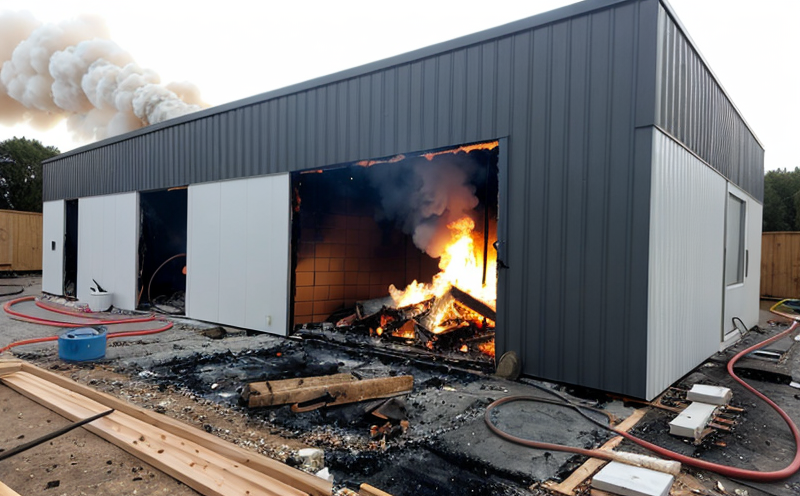Reaction to Fire Testing for Mineral Wool Insulation
The Reaction to Fire (RfF) test is a critical component of ensuring safety and compliance in building materials, particularly those used in insulation systems. This test evaluates how a material behaves when exposed to fire, focusing on its ability to resist ignition, develop flame, spread of flame, and produce smoke and toxic gases under controlled conditions.
Mineral wool is widely recognized for its excellent thermal and acoustic insulating properties but also needs to meet stringent safety standards regarding its performance in a fire scenario. The RfF test specifically targets the material's behavior during exposure to flames, assessing factors such as flame spread, smoke production, and toxicity of emissions.
The testing process involves subjecting a sample of mineral wool insulation to controlled conditions that simulate real-world fire scenarios. This can include tests like the European Standard EN 13501-1 which evaluates both the behavior below and above 20 minutes after ignition. The test provides crucial data on how quickly flames spread across the surface, whether they persist for a prolonged period, and what kinds of toxic gases or particles are released.
The results from these tests are essential for ensuring that materials comply with local and international building codes and standards such as ASTM E84 or EN 13501-1. Compliance is not just about meeting legal requirements; it's also about protecting lives, minimizing property damage, and enhancing overall safety in construction projects.
For R&D engineers and quality managers, understanding the intricacies of these tests can be invaluable. It helps them optimize product performance while ensuring that every batch meets rigorous standards. By incorporating this testing into their development processes early on, companies can avoid costly rejections later in the supply chain or during compliance inspections.
The RfF test plays a pivotal role in determining whether mineral wool insulation products can be used safely within various applications ranging from residential homes to industrial facilities. Its outcomes significantly influence decisions made by architects, engineers, and building owners who rely on accurate data when specifying materials for new constructions or renovations.
Benefits
- Enhanced Safety: Ensures that the material will not contribute to the spread of fire, thereby protecting occupants and reducing potential damage.
- Compliance Assurance: Provides essential data required for compliance with international standards like EN 13501-1 and ASTM E84.
- Improved Product Reputation: Demonstrates commitment to quality and safety, which can enhance brand reputation among customers and stakeholders.
Eurolab Advantages
Eurolab offers unparalleled expertise in fire testing services tailored specifically for mineral wool insulation. Our state-of-the-art facilities are equipped with the latest technology to perform comprehensive RfF tests according to recognized international standards.
We have a team of experienced professionals who understand the nuances involved in conducting these tests accurately and efficiently. This ensures that you receive reliable results every time, which is crucial for making informed decisions about your product's performance and safety.
Our services extend beyond just testing; we also offer consultancy to help design better products by understanding their fire behavior early on in the development process. By leveraging our deep industry knowledge and advanced analytical tools, Eurolab can provide valuable insights that drive innovation while maintaining high standards of quality.
Environmental and Sustainability Contributions
The RfF testing for mineral wool insulation contributes positively to environmental sustainability by promoting the use of safer materials in construction. Ensuring that fire safety meets stringent criteria helps create more resilient buildings capable of withstanding fires without compromising public safety.
Incorporating such tests into product development ensures long-term benefits, including reduced insurance premiums for safer structures and lower maintenance costs due to enhanced durability against fire-related incidents. Additionally, meeting these standards can contribute positively towards green building certifications like LEED or BREEAM, further aligning with global efforts toward sustainable construction practices.





